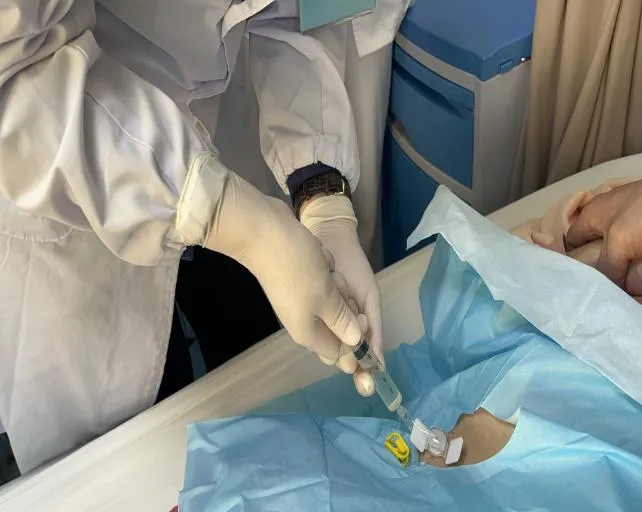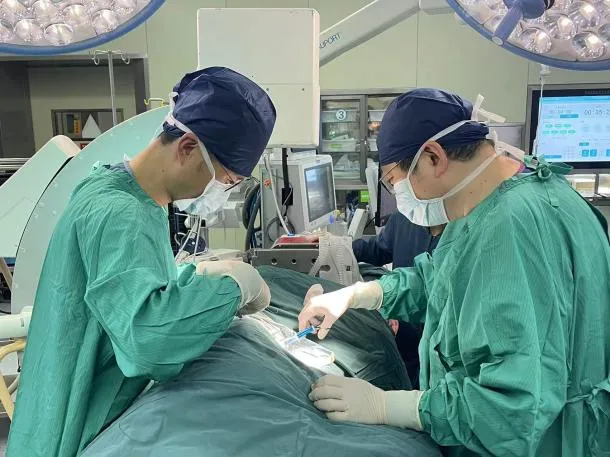On December 25, 2024, Professor Yao Yu’s team from Department of Oncology cooperated with Professor Wang Suoliang’s team from Department of Pain in the First Affiliated Hospital (FAH) of Xi'an Jiaotong University (XJTU) to complete a case of spinal access port implantation combined with intracranial chemotherapy, providing a novel treatment pattern for patients with meningeal metastasis of solid tumor. Through literature review, this is the first case of such kind in China.

"For patients with meningeal metastasis of solid tumor, traditional intrathecal injection chemotherapy combined with systemic therapy is currently the main modality, which can effectively prolong the survival time of patients, but intrathecal injection has multiple shortcomings", as stated by Yao Yu. Traditional method is complicated to operate and repeated puncture is likely to increase the risk of infection, which will also provoke fear and discomfort of patients. How to reduce the number of lumbar puncture and complete intrathecal chemotherapy conveniently and rapidly has become a challenge to be solved urgently in clinical settings.
Considering the patient's condition, the team from Department of Oncology intimately cooperated with Department of Pain to propose a novel clinical regimen of spinal access port implantation combined with intracranial chemotherapy on the basis of previous experience in treating refractory cancer pain. The patient was diagnosed with advanced lung adenocarcinoma complicated with meningeal metastasis, who suffered from dizziness and progressive hearing loss for more than 5 months. Through minimally invasive interventional surgery, the expert team implanted the drug catheter in the spinal access port into the third ventricle of the brain through the subarachnoid space. The patient recovered well after surgery, and has successfully received two cycles of intracranial injection chemotherapy through spinal access port and one cycle of cerebrospinal fluid sampling, achieving the therapeutic purpose. At present, the patient's dizziness symptoms have been significantly alleviated.


Professor Wang Suoliang highlighted that the most profound advantage of this technology is that chemotherapy drugs can be routinely injected through the abdominal port, and the drugs can be given intracranially. Direct contact of high-concentration drugs with intracranial lesions can not only achieve precise treatment, but also lower the risk of infection, mitigate relevant discomforts and enhance therapeutic effect.